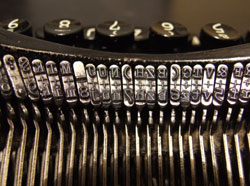License Plates Put Money Where Motto Is
The beauty of a “Choose Life” license plate lies in its beneficiaries.
All proceeds from these automobile accessories support women with unplanned pregnancies who choose adoption plans, rather than abortions, for their unborn babies.
A Florida grassroots group with an all-volunteer staff created the concept. Choose Life Inc. might best be described as the-little-non-profit-that-could. The movement keeps chugging along and picking up steam.
Seventeen states now allow “Choose Life” auto plates. Advocates in another 11 states are mounting efforts to jump on board.
Plus, mothers and infants in more Western states will reap the rewards of these auto adornments thanks to an uplifting federal court ruling on January 28. The notably liberal Ninth U.S. Circuit Court of Appeals in San Francisco ruled in favor of Arizona anti-abortion advocates’ right to freely express their views on their bumpers. Pro-lifers’ right of free speech was violated, the court concluded, when the Grand Canyon State’s License Plate Commission denied the Arizona Life Coalition’s application for “Choose Life” specialty license plates.
The parent non-profit, Choose Life Inc., struggled for four years to put its money where its motto is and make the first adoption-friendly plates available to Floridians.
The group’s challenges strengthened it. When the story of Choose Life, Inc.’s efforts went national, people from all over the country wanted to know how to introduce the license plates in their states. After a series of legislative ups and downs, a law approving the cheerful, neon yellow plates was finally passed. The Florida Department of Motor Vehicles made them available to the state’s motorists in August 2000.
Here’s how “Choose Life” license plate revenue works for pregnant women who choose the adoption option in the Sunshine State, according to Choose Life Inc.:
“Funds generated by Florida’s ‘Choose Life’ specialty license plate assist these women with the expenses of a full-term pregnancy — such as medical bills, temporary housing, transportation, utility bills, food, maternity clothing and similar expenses of infants — until placed with an adoptive family. Each county receives the revenues generated from within the county by sales of Florida’s ‘Choose Life’ specialty license plate. The county commission distributes the funds to qualified not-for-profit agencies within each county.”
Automobiles in my home state, Pennsylvania, now sport blue, white and yellow specialty plates that read “PA Choose Life.” The first plates hit the road in March of 2007.
“PA Choose Life” plates cost $44. (Floridians pay $40.10.) Pennsylvania’s Department of Transportation receives $24 for each license plate, which becomes the property of the motorist. The remaining $20 is the driver’s donation to Pennsylvania Choose Life, Inc. (PAChoose-Life.org). That part of plate cost goes directly to pregnancy resource centers and maternity homes to support birthmothers who choose an adoption plan for their babies. Pennsylvania Choose Life donors will be asked to renew their donations of $20 each year.
Those annual $20 donations add up.
By January of 2008, the selling and renewal of “Choose Life” license plates raised more than $8.4 million in the 17 states then selling the plates.
Spurred by Choose Life, Inc.’s financial success, the Florida National Organization for Women created its own specialty plate. The “For Equality NOW Pro-Choice” plate benefits state chapters of NOW.
“Our plate will endow funds to empower women and men to take control of their reproductive lives. We [NOW] will fund grants for comprehensive sex education, and give women better access to contraception,” according to information on the Orlando NOW “License to Choose” website.
Hmmm. Seems like sex education, contraceptives and access to contraceptives are already plentiful to me. Plus, contraceptives sometimes fail or people fail to use them or to use them as directed. Statistics from the pro-abortion Guttmacher Institute’s “Facts on Induced Abortion” (January 2008) support this supposition. Consider this:
“Fifty-four percent of women who have abortions had used a contraceptive method (usually the condom or the pill) during the month they became pregnant. Among those women, 76% of pill users and 49% of condom users report having used their method inconsistently, while 13% of pill users and 14% of condom users report correct use.”
There’s more: “Forty-six percent of women who have abortions had not used a contraceptive method during the month they became pregnant.”
The National Organization of Women’s belief that it can correct the contraceptive behaviors documented by Guttmacher with “comprehensive sex education” is boondoggled. An investment in NOW pro-choice plates seems like an opportunity to toss dollars into a dumpster.
Floridians, Arizonians, Pennsylvanians and all Americans with genuine interest in “choice” might want to support the specialty plate effort that offers women more than one choice and a win-win-win situation.
“Choose Life” plates benefit both babies and two groups of women.
Women in the first set find themselves in a time-sensitive bind. They’re pregnant and they don’t want motherhood. For whatever the reasons, these women are uncomfortable with abortion. So they choose an adoption plan and engage in a nine-month labor of love in order to deliver their babies into the arms of grateful families.
The women in the second group are distressed. They long to have children. For whatever the reasons, these women are unable. So they choose adoption, complete paperwork, pass inspection and wait for the birthmothers to make their special deliveries.
A baby is born.
Love begets love thanks to a license plate.
For information on Choose Life license plates, or to check on the status of the specialty plates in your state, see Choose-Life.org or telephone (352) 624-2854.
Marybeth T. Hagan is the author of Abortion: A Mother’s Plea for Maternity and the Unborn (Liguori).
- Keywords:
- March 2-8, 2008














